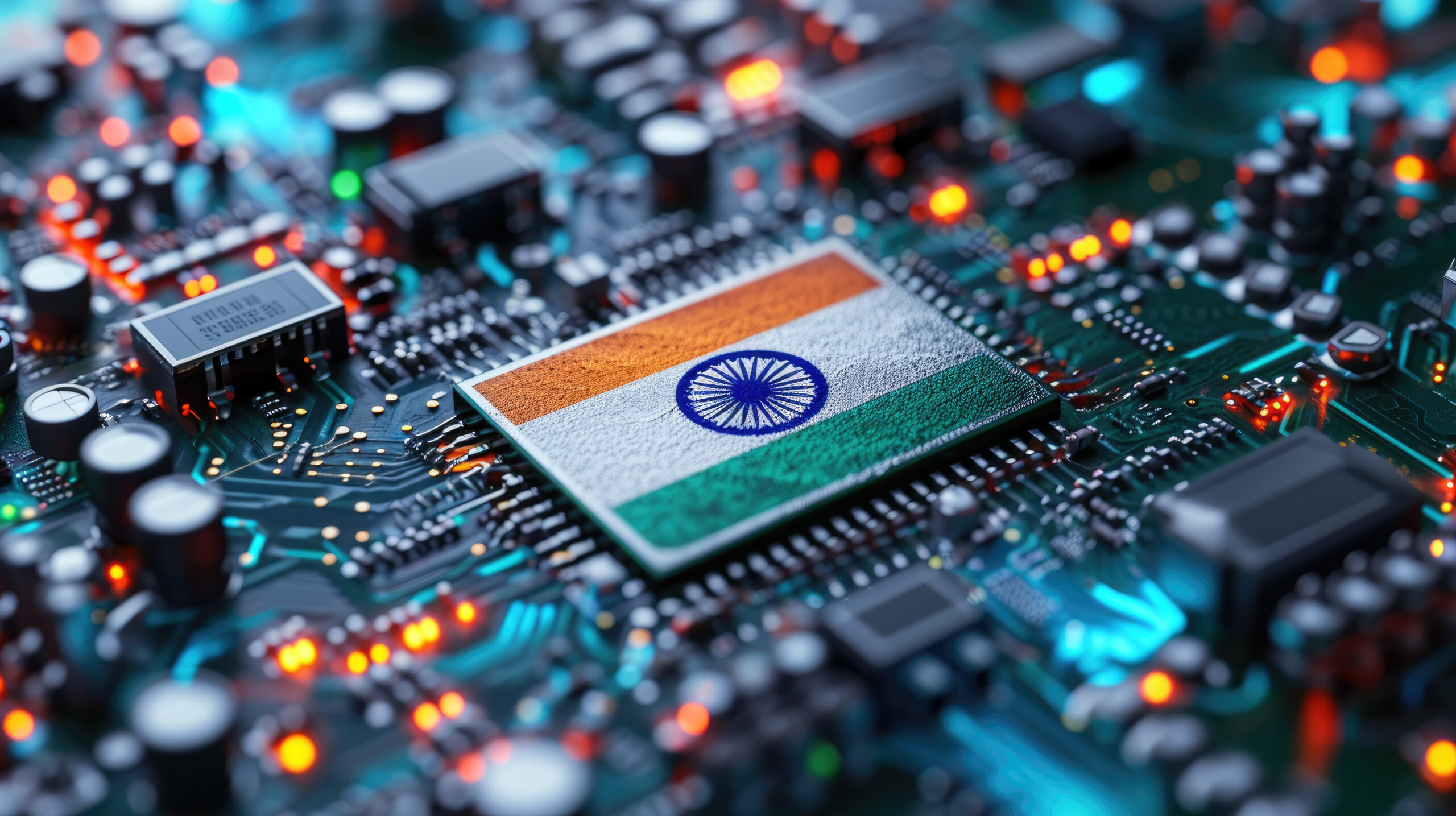In just two years, a 194 million dollar investment by Apple’s supplier, Foxconn, has turned Chennai into a thriving tech hub. This shift, fueled by policy overhauls and geopolitical shifts, positions India as a prime alternative to China’s production dominance. But how did India get here, and what hurdles remain as it steps into the future of tech?
India’s Tech Boom: How Did We Get Here?
This rapid transformation didn’t happen overnight. It traces back to a pivotal moment in 1991, when economic reforms shattered protectionist barriers and flung open India’s doors to global trade. In the early post-colonial decades, the Indian government adopted a strong protectionist policy with high import barriers and strong industrial regulation. However, as a result of a severe payment imbalance crisis in 1991, the premiership of Manmohan Singh enacted a series of economic reforms. Singh liberalized trade and pushed for a broader shift towards a market-oriented economy. These reforms propelled India into a period of industrialization, but more significantly, they opened India to global trade and investment.
The Policy Playbook: India’s Strategy for Growth
In recent years, the intensifying trade war and escalating tariffs have prompted U.S. companies to seek alternatives to production in China. In this search for cost-effective labor and growing infrastructure, India has emerged as the rising powerhouse of global manufacturing.
This favorable position is not a surprise to Indian policy makers. Since 2019, policy revamps under Prime Minister Modi, including initiatives like “Make in India” and “Digital India,” have deliberately positioned India as a global tech manufacturing hub. Infrastructure expansion programs like “Make in India,” “Digital India,” and “Startup India” are driving tech production and fostering a favorable business environment. Policy revamps since 2019 aim to bolster domestic manufacturing and position India as a global production powerhouse. These initiatives have been complemented by other programs such as “Ease of Doing Business” reforms, which have streamlined regulatory processes and encouraged foreign investment.
India’s electronics and semiconductor strategy has also seen significant developments. In 2019, the government revamped its policy to promote electronics manufacturing, with a focus on creating a robust ecosystem. Notably, Tata Electronics, in partnership with Powerchip Semiconductor Manufacturing Corporation (PSMC), is establishing India’s first semiconductor fab in Gujarat’s Dholera, marking a major milestone in India’s semiconductor ambitions. The first ‘Made-in-India’ chip is expected to be launched soon, further solidifying India’s position in the global tech landscape.
Additionally, India’s tech sector is witnessing a major shift with the rise of Global Capability Centers (GCCs), changing business models, and AI adoption, which are expected to drive workforce hiring in 2025. The government’s commitment to bridging the rural digital divide and promoting emerging technologies like AI and semiconductors underscores India’s drive to become a tech superpower. With its large and trainable workforce, geopolitical stability, and lower labor costs compared to China, India is poised to capture a significant share of global manufacturing from China.
In November 2024, discussions progressed regarding Foxconn, India’s largest contract manufacturer, establishing a significant Battery Energy Storage System (BESS) facility in Tamil Nadu. The Tamil Nadu government proposed offering 200 acres of land for the project, marking a substantial investment in India’s energy infrastructure. This facility would be Foxconn’s second BESS unit globally, aligning with the company’s strategic focus on electric vehicles and renewable energy solutions.
However, reaching this ambitious target will require more than just infrastructure and digital transformation. India must also reform its regulatory environment to attract sustained foreign investment, and ensure businesses can operate efficiently. Without addressing these challenges, maintaining a 7.8% growth rate may prove difficult.
India’s Regulatory Dilemma: Protection vs. Growth
India stands at a pivotal moment. After a surge of foreign investment and rapid technological development, the nation is now grappling with the challenge of balancing progress with protection. While foreign production has boosted job creation and accelerated economic growth, unchecked expansion carries the risk of exploitation, safety violations, and environmental harm. The challenge lies in crafting a regulatory framework that safeguards public welfare without stifling the very growth that drew companies to India in the first place.
Regulations are essential to protect workers, consumers, and the environment. However, in India’s current system, the burden of compliance can be overwhelming, especially given the country’s limited administrative capacity. For example, India has only 644 inspectors for 321,578 factories, meaning one inspector monitors 500 factories, an impossible task that weakens compliance. Furthermore, regulations force factories with 10,000 sqm plots to give up up to 3,522 sqm for setbacks, costing businesses up to ₹97.5 lakh in lost productive land and eliminating 521 potential jobs. The steep costs of compliance often lead to lost revenue and abandoned expansions, discouraging both local and foreign investors.
Despite its potential, India has gained a troubling reputation among global investors. Complex tax structures, unpredictable law enforcement, and opaque market regulations have driven many businesses to seek safer, more predictable markets like Vietnam. Some complaints include sudden, stringent audits that result in heavy fines, discouraging long-term investment, as well as unpredictable shifts in regulations that make it difficult for businesses to plan and scale operations. As risk outweighs reward, investors often pull out or bypass India altogether. This environment has made it clear: without reform, India risks losing its chance to solidify its position as a global industrial leader. But what should that reform look like?
Two Regulatory Approaches
There are two ends of the regulation spectrum: At one end, there’s the pro-protection model. This model is highly regulated and based on the principle that everything is prohibited unless explicitly allowed. At the other end, there is the pro-growth model. This model is characterized by business-friendly policy and the logic that everything is allowed unless explicitly prohibited.
Each regulatory model comes with distinct strengths and weaknesses. The pro-protection approach offers significant benefits, such as strong consumer protection through policies like the General Data Protection Regulation (GDPR), which enhances trust in digital services. Additionally, stringent environmental and social standards promote public health and safety. While antitrust laws like the Digital Markets Act (DMA) foster competition and prevent monopolistic practices. However, this protection-first model comes at a cost. High compliance expenses can stifle smaller businesses and delay product rollouts, while rigid oversight may limit companies’ ability to experiment with new technologies. For example, Apple recently postponed the launch of its AI features in Europe, citing regulatory uncertainty as a barrier to innovation.
On the other hand, a pro-growth approach allows companies to quickly develop and deploy new technologies, driving rapid economic growth and encouraging entrepreneurial risk-taking. The U.S.’s comparatively light-touch regulation has been a catalyst for tech giants like Google and Facebook to flourish, shaping entire industries with minimal initial interference. Yet, the downside of this hands-off approach is equally clear. The absence of proactive safeguards can lead to public harm, as seen with privacy breaches and misinformation on social media platforms. Moreover, weak antitrust enforcement has enabled a handful of companies to dominate markets, stifling competition and consolidating power in ways that may ultimately harm consumers.
In summary, the pro-protection model prioritizes consumer protection and fairness but may constrain innovation due to high compliance costs. The pro-growth model fosters innovation but risks public welfare without adequate guardrails. The choice between these models depends on the balance between promoting economic growth and ensuring public safety and fairness.
The Road Ahead: Can India Strike the Right Balance?
As global trade realigns, India’s ability to strike the right balance between regulatory reform and investor confidence will determine whether it becomes the next tech superpower or remains a “graveyard of foreign companies.” The good news is that policy makers do not have to choose just one. By selectively adopting elements from both regulatory models, India can foster an environment where businesses thrive without compromising public welfare. The goal is not to eliminate regulation but to make it smarter.
In the end, Indian leaders’ willingness to embrace thoughtful, pragmatic reform will decide whether it cements itself as a global economic powerhouse, or continues to cede ground to more predictable markets. The opportunity is there. The time to act is now.
Featured Image Source: EAC International Consulting






Comments are closed.